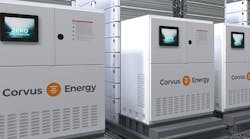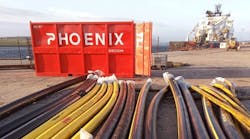The geophysical business is renowned for visionaries and optimists, and the continual innovations that collectively have benefited the industry and the oil companies. Despite the fact that commodity prices are at their peak, these customers are coping with the:
- Vagaries of the market over the last 18 months
- Demands that Wall Street is placing on their business
- Effects of super-mergers and their resultant downsizing.
The geophysical contracting business also has experienced a profound change. Vying to place geophones in the ground or drag them through the ocean at or below cost is not a viable business model. However, the larger contractors, including Veritas, have continued to invest in new technology despite uncertain commodity and contract prices - technology that revolutionizes the way we view and manipulate data and, more importantly, changes the way we interact with our customers.
Technical innovation
The consolidation and subsequent tightening of internal resources at the companies who pay for our services is providing an opportunity for service companies to take the lead in areas such as research, development, and technical innovation, and to set the standards for the final delivered product.
Just as 3D seismic revitalized the geophysical business over the last five years, adoption and implementation of new technologies continues to drive the business. Promising advances in acquisition technologies such as 3C (three-component) and 4D (time-lapse 3D surveys) data recording are on the horizon. These should enable us to provide better resolution and ultimately real-time monitoring of hydrocarbons in new and existing reservoirs. This data will not only need to be acquired, but processed, visualized, and interpreted.
Today, contractors routinely acquire data for licensing on a non-exclusive basis to multiple customers. Oil companies have accepted the fact that they don't need to own large volumes of data when it's available for license through data libraries at a fraction of the cost that data ownership requires. However, the increasing volumes of data used in 3D exploration require large commitments to the massive computer power required to process the data. Large multi-disciplinary interpretation teams are required to analyze the data and ultimately choose accurate drilling locations.
Shortening processing
The complexities of subsalt formations found in areas like the Gulf of Mexico and offshore West Africa yield data sets that take many months to process using complicated routines such as pre-stack depth migration, and then many months more to interpret in 2D time slices on workstations. Oil company budgets and resources for these activities are under considerable pressure.
A quiet revolution in the way this data is handled has begun, even during the recent economic restraints of the industry. As an example, Veritas has begun global installations of the supercomputer power required to process these large datasets (Singapore and Houston, and a third being installed in Crawley, UK). Also, visualization centers are being opened (Houston and Crawley, UK, with two more being installed in Calgary, Canada and Perth, Australia) which allow large volumes of 3D data to be displayed, manipulated, and rapidly interpreted in a regional volumetric sense.
Service companies are expanding and re-tooling in order to provide a suite of integrated technologies encompassing acquisition, processing, interpretation, and visualization to oil companies, and are making them available on a non-exclusive basis.
As in the acceptance of non-exclusive data, the acceptance of other non-exclusive products is not an overnight process. Oil companies have been reluctant historically to yield any proprietary interest in the processing and interpretation of their data. However, access to new technology, with no increased capital expense or personnel additions, allows more exploration dollars to be allocated for what counts - identifying accurate drilling locations.
The geophysical service community continues to implement new technologies in a cost-effective manner, mutually benefiting customers and our own businesses. The walls between the groups are slowly being eroded.
Tim Wells
President and Chief Operating Officer
Veritas DGC Inc.




